The concept of a Three Sisters Garden is romantic. A Native American tradition of growing corn, beans and squash together has traveled through the centuries and still remains a viable planting method for these hot weather crops. But what happens when it doesn’t turn out picture perfect? Let me tell you.
Our Three Sisters Garden started off with a whimper, with the heirloom Black Aztec sweet corn tasseling out early. Still we sallied forth. The weather began to comply and the corn eventually began to reach for the sky. So we planted beans – step two in the Three Sisters Garden.
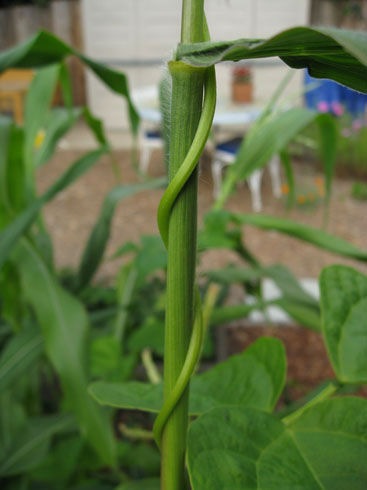
Romano pole beans climbing a corn stalk
What happened? It became clear within about a week that the beans were quickly going to overtake the corn. So we added a length of trellising to the side of the raised bed that appeared to be growing the fastest. Just in time…

Notice there is no corn in sight
Our beans are vigorous, I’ll say that, and along the way, we noticed something odd occurring with the corn. Have you ever heard of “Tassel Ears”? Well, this is what it looks like:
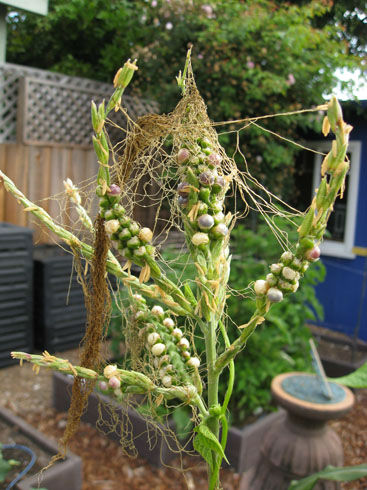
Tassel Ear
Tassel Ear is when the both the male and female parts of a tassel develop, so you get kernels and silks on your tassels as well as pollen. It’s an anomaly, and scientists can’t yet explain it. It typically happens on the side shoots or suckers of the corn stalk, or along the end rows of a field. Our corn is performing this feat willy-nilly.
Tassel ear doesn’t increase yield, but doesn’t necessarily decrease it either. I have a little feeling though, that we’ll be seeing a drop in production.
But moving on. Steps one and two were implemented, so that only left step three: squash.
We planted 3 types of squash, Delicata, Cinderella’s Carriage pumpkins, and Butternut around the base of the bed. Since each squash belongs to a different species (Pepo, Maxima and Moschata respectively), we can save the seeds from each of these squash plants without fear of cross-contamination.
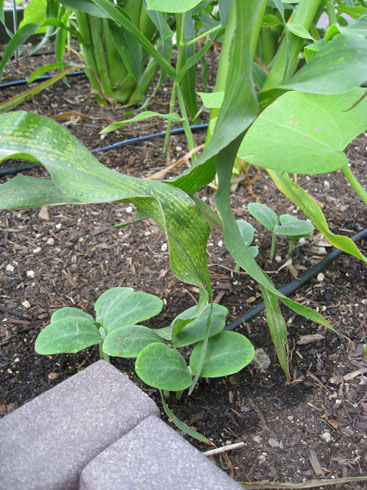
Butternut squash sprouts next to corn
Squash grows around the base of the other plants, forming a living mulch, preventing evaporation of water and keeping roots cool. If all goes according to plan (which is has yet to do – I’m looking at you corn and beans) then we will have a truly wonderful Three Sisters Garden in summer.
Stay tuned…


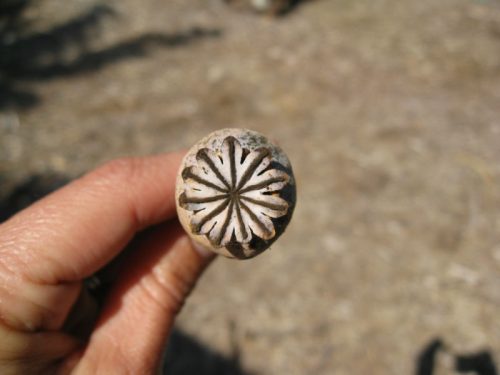
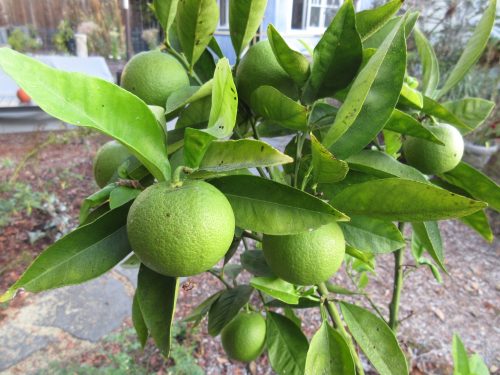

Pingback: Gardening By The Moon with Stephen McComber - Gardenerd